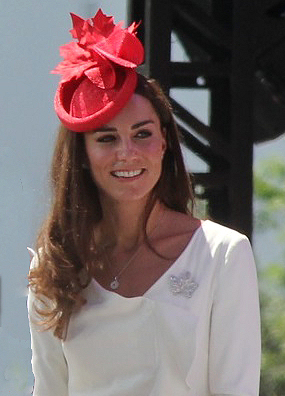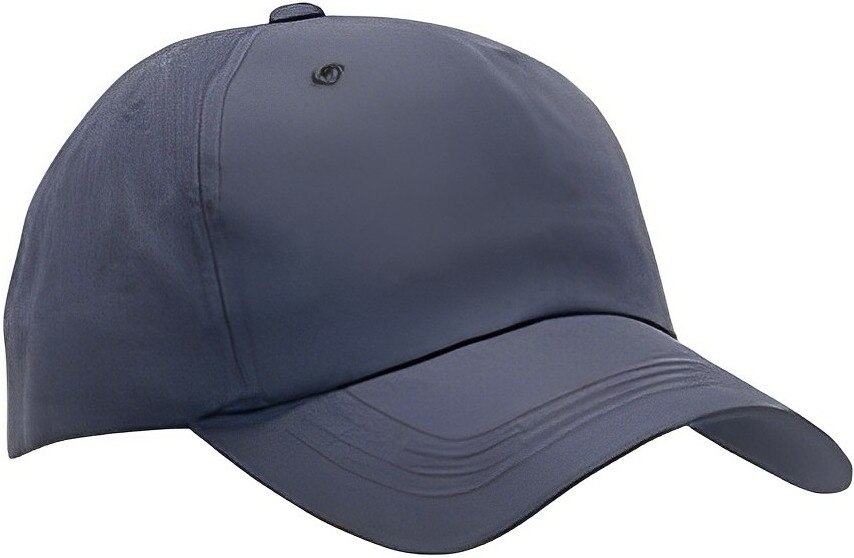|
Bicycle Clip Hat
A bicycle clip hat is a style of small hat or millinery decoration that includes a metal clip β similar to traditional designs used by cyclists β to hold it in place. It may be very similar to a half hat or fascinator in design, covering only part of the head. The term has also been used to describe a design of headband that became popular in the 1950s and 1960s. This might be fabric attached to a piece of curved metal that held it firmly on the head. In the 1950s, the bicycle clip design was also incorporated into designs of chignon cap β a fabric covering designed to cover a bun at the back of the head. See also *Baseball cap *Cap of maintenance *Dutch cap A Dutch cap or Dutch bonnet is a style of woman's hat associated with the various traditional Dutch woman's costumes. Usually made of white cotton or lace, it is sometimes characterized by triangular flaps or wings that turn up on either side. ... * Gandhi cap * Halo hat References Hats 1950s fashion { ... [...More Info...] [...Related Items...] OR: [Wikipedia] [Google] [Baidu] |
Trouser Clips
Bicycle clips, also called trouser clips, are small C-shaped pieces of thin metal worn around the ankle when cycling in trousers. They are designed to prevent the bottom of the trousers from becoming caught in the chain or crank mechanism, and from being covered in oil and dirt. Additionally, they may have fluorescent (usually yellow) and reflective materials attached which make the cyclist more visible. See also * Terry clip A Terry clip (or Terry's clip) is a spring metal clip used to hold a cylindrical object. For example, to secure a bicycle pump onto a bicycle frame. The object to be held is pushed into the clip to secure it, and pulled out to release. The original ... References Cycling clothing {{Cycling-stub ... [...More Info...] [...Related Items...] OR: [Wikipedia] [Google] [Baidu] |
Half Hat
A half hat (also sometimes half-hat) is a millinery design in which the hat covers part of the head. Generally, the design is close-fitting, in the manner of the cloche, and frames the head, usually stopping just above the ears. It may be similar to a halo hat in the way that it frames the face and can be worn straight or at an angle. The half-hat is said to have been created by the French-born and US-based milliner Lilly DachΓ©, who won an award for the design in 1941. History and usage The half hat became popular in the post-war period, especially in the 1950s. This was a design considered suitable for day and evening wear, and some designs included details such as sequins and veils. Designs were often stiffened to create a halo shape β a 1952 design from Ascot Millinery was made of decorated straw with an inner lining of velvet. While many designs stopped a little way beyond the crown of the head, there was also a fashion for more bonnet-like shapes to half hats. Writing ... [...More Info...] [...Related Items...] OR: [Wikipedia] [Google] [Baidu] |
Fascinator
A fascinator is a formal headpiece, a style of millinery. Since the 1990s, the term has referred to a type of formal headwear worn as an alternative to the hat; it is usually a large decorative design attached to a band or clip. In contrast to a hat, its function is purely ornamental: it covers very little of the head, and offers little or no protection from the weather. An intermediate form, incorporating a more substantial base to resemble a hat, is sometimes called a hatinator. Etymology The word "fascinator" is derived from the Latin verb ''fascinare'' ("to fascinate"), and simply means a thing or person that is enthralling or extremely interesting. Historically, the term was also applied to a person or animal with the (perhaps magical) power of rendering others unable to move or escape. History Earlier decorative headpieces It was customary for Christian women in Europe to wear some sort of headcovering. The European fashion of decorating the head with a hat can be ... [...More Info...] [...Related Items...] OR: [Wikipedia] [Google] [Baidu] |
Bun (hairstyle)
A bun is a type of hairstyle in which the hair is pulled back from the face, twisted or plaited, and wrapped in a circular coil around itself, typically on top or back of the head or just above the neck. A bun can be secured with a hair tie, barrette, bobby pins, one or more hair sticks, a hairnet, or a pen or pencil. Hair may also be wrapped around a piece called a "rat". Alternatively, hair bun inserts, or sometimes rolled up socks, may also be used to create donut-shaped buns. Buns may be tightly gathered, or loose and more informal. Double bun Double or pigtail buns are often called , which is also a type of Japanese dumpling (usually called ; the is honorific). The term in Japanese can refer to any variety of bun hairstyle. In China, the hairstyle is called (). It was a commonly used hairstyle up until the early 20th century, and can still be seen today when traditional attire is used. This hairstyle differs from the odango slightly in that it is gender neutral; ... [...More Info...] [...Related Items...] OR: [Wikipedia] [Google] [Baidu] |
Baseball Cap
A baseball cap is a type of soft hat with a rounded crown and a stiff bill projecting in front. The front of the hat typically displays a design or a logo (historically, usually only a sports team, namely a baseball team, or names of relevant companies, when used as a commercial marketing technique). The hat may be "fitted" to the wearer's head or the back may have elastic, a plastic prong-in-a-hole (multiple holes with one prong that can be inserted), Velcro, a zipper, or a tri-glide slide so that it can be quickly adjusted to fit different wearers' heads. The baseball hat is a part of the traditional baseball uniform worn by players, with the brim pointing forward to shield the eyes from the sun. Since the 1980s, varieties of the hat have become prevalent in the United States and many other nations, both for utilitarian (protecting the eyes from the sun) and fashion accessory purposes. History In 1860, the Brooklyn Excelsiors wore the ancestor of the modern rounded-top ... [...More Info...] [...Related Items...] OR: [Wikipedia] [Google] [Baidu] |
Cap Of Maintenance
Typical of British heraldry, a cap of maintenance, known in heraldic language as a ''chapeau gules turned up ermine'', is a ceremonial cap of crimson velvet lined with ermine, which is worn or carried by certain persons as a sign of nobility or special honour. It is worn with the high part to the fore, the tapering tail behind. It may substitute for the torse (a twisted roll of fabric) in the heraldic achievement of a person of special honour granted the privilege by the monarch. It thus appears in such cases on top of the helm and below the crest. It does not, however, feature in the present royal coat of arms of the United Kingdom, which shows the royal crest upon the royal crown, itself upon the royal helmet. Origins The origin of this symbol of dignity is obscure. One might speculate that the origin relates to the Old French verb ''maintenir'' β "to hold" or "to keep". A purpose of the cap was to keep a crown or coronet secure (and comfortable) on the head, thus its fu ... [...More Info...] [...Related Items...] OR: [Wikipedia] [Google] [Baidu] |
Dutch Cap
A Dutch cap or Dutch bonnet is a style of woman's hat associated with the various traditional Dutch woman's costumes. Usually made of white cotton or lace, it is sometimes characterized by triangular flaps or wings that turn up on either side. It can resemble some styles of nurse's hat. referring to the more usual style of nurse hat as a "traditional Dutch cap". Many parts of the Netherlands have their own traditional costumes. Images [...More Info...] [...Related Items...] OR: [Wikipedia] [Google] [Baidu] |
Halo Hat
A halo hat (sometimes halo brim hat) is a millinery design in which the headgear acts as a circular frame for the face, creating a halo effect. The design is said to date back to the late 19th century, when it was known as the aureole hat; this name is sometimes still used. It may also be known as the ''angel hat'' or ''bambini'' β the latter said to derive from Italian for terracotta plaques depicting the infant Christ. A halo hat may be a wide range of sizes β some lying close to the head in the style of a bonnet or cloche and others that are similar in dimensions to a picture or cartwheel hat. Typically, designs are worn towards the back of the head to create the 'halo' effect. Some designs with open crowns may also be referred to as halo hats or as diadems. Popular from the 1930s on, the halo hat was created in a variety of fabrics β knitted or crocheted versions could be made at home β and could be a circle or semi-circle in shape. The halo became popular with brides; ... [...More Info...] [...Related Items...] OR: [Wikipedia] [Google] [Baidu] |
Hats
A hat is a head covering which is worn for various reasons, including protection against weather conditions, ceremonial reasons such as university graduation, religious reasons, safety, or as a fashion accessory. Hats which incorporate mechanical features, such as visors, spikes, flaps, braces or beer holders shade into the broader category of headgear. In the past, hats were an indicator of social status. In the military, hats may denote nationality, branch of service, rank or regiment. Police typically wear distinctive hats such as peaked caps or brimmed hats, such as those worn by the Royal Canadian Mounted Police. Some hats have a protective function. As examples, the hard hat protects construction workers' heads from injury by falling objects, a British police Custodian helmet protects the officer's head, a sun hat shades the face and shoulders from the sun, a cowboy hat protects against sun and rain and an ushanka fur hat with fold-down earflaps keeps the head an ... [...More Info...] [...Related Items...] OR: [Wikipedia] [Google] [Baidu] |



